Harman Kardon’s Citation series is a family of speakers, both small and large, portable and desktop. They are all upholstered in fabric from Danish Kvadrat, which gives a softer look than several competitors. Including the Sonos Arc, which must be the closest competitor to the tested Citation MultiBeam 1100.
Where Sonos and others use proprietary multi-room technology, Harman Kardon’s Citation speakers simply use Google Home and AirPlay 2, meaning they can be used with many other brands that support the same systems. That makes it easier to deal with – not least because you can pick products based on sound quality, ease of use and appearance, rather than being forced to stick with the same brand.
Many in the class – including the MultiBeam 1100 – also have built-in voice control for both themselves and the smarthome, giving them the same functionality as a Google Nest speaker or Apple HomePod.
When it comes to soundbars, the Citation family has been lacking a proper flagship to rival the best from Sonos, Samsung, Sony and Bose, not to mention sister company JBL. The Citation MultiBeam 700 is good at €349, but far from being impressive.
First from HK with Dolby Atmos
That’s all about to change with the new top-of-the-range Citation MultiBeam 1100. A handsome soundbar, exclusively fabric-covered like its family members, and barely three centimetres shorter than its arch-rival Sonos Arc.
Harman Kardon, like everyone else, has seen the need for a soundbar with Dolby Atmos support, and the new flagship is equipped with a total of eleven drivers, two of which are pointed upwards to reproduce Atmos sound effects from above. This should create a more three-dimensional soundscape that wraps around the listener. This is achieved by speakers pointing in all directions, reflecting the sound around the room and back to the listener, who should feel that there are speakers all around. This is done with clever computational power in the on-board processor.
To get the most out of Dolby Atmos from movie and streaming services, connect the soundbar’s HDMI output to the TV’s HDMI input labeled eARC. Then you can also use the TV’s remote to control the sound on the MultiBeam 1100 if you don’t want to use the included remote.
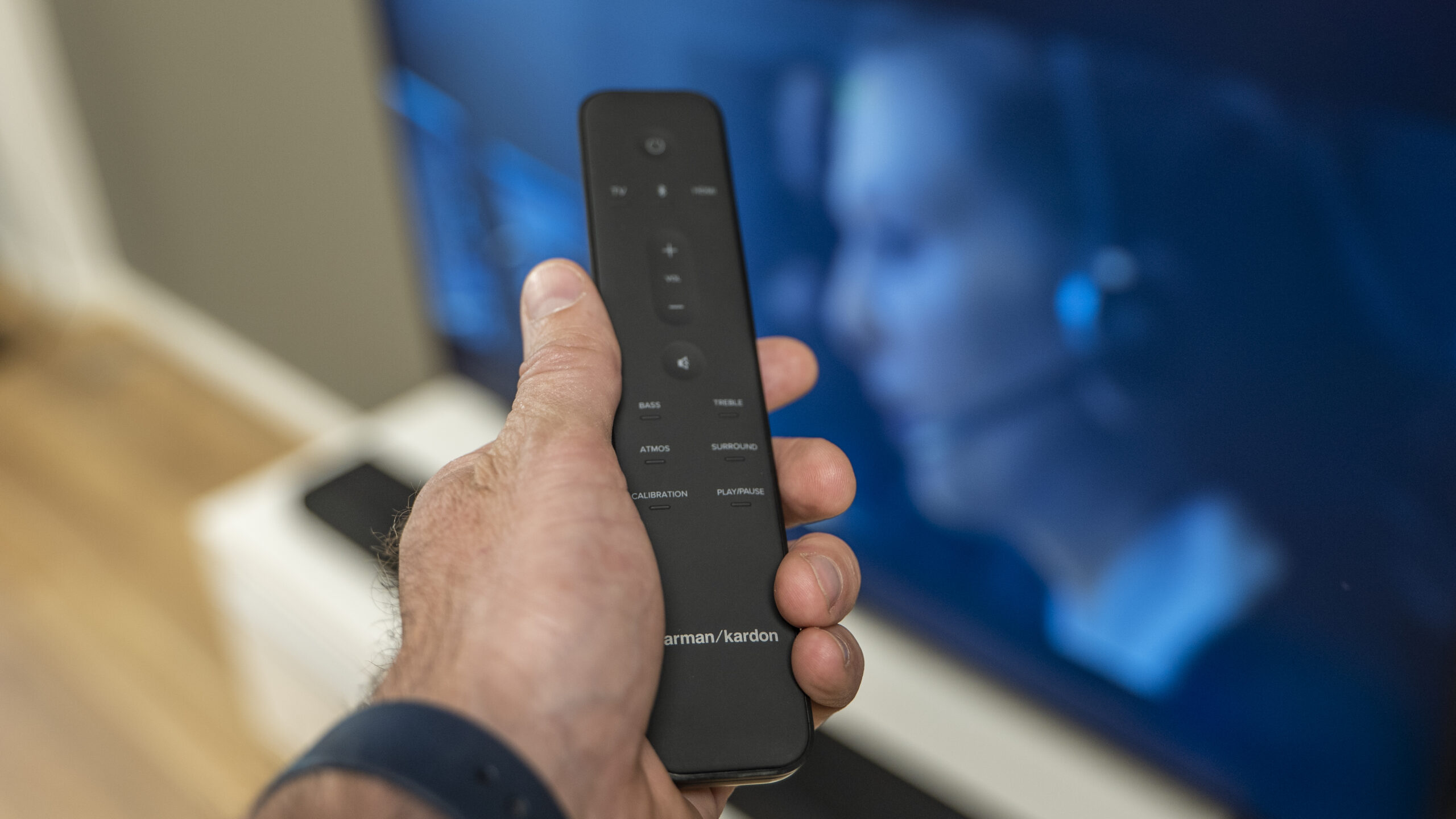
MultiBeam = room correction
The name MultiBeam comes from Harman Kardon’s (and JBL’s) room correction technology. When the soundbar is set up for the first time, you are prompted to activate MultiBeam. Test sounds are emitted from the speakers and picked up again by a built-in microphone in the soundbar itself. This continues for a while with thuds and whirrs before it says all is well. Your only job is to keep quiet during the calibration.
Google Home
Setting up the soundbar is very easy if you have a Google account. Then you just open the Google Home app on your phone, it finds the speaker in the list, and you then tap through, step by step.
If you have a pair of Citation Surround back speakers and a Citation Sub, these can be paired with the soundbar via the touchscreen – which unfortunately sits on top, not the front of the soundbar. Swipe to Settings and Speaker Setup, and tap Pairing. Then select sub and surround. Once this is done, you should recalibrate the room correction.
The sound of the Citation MultiBeam 1100
The opening scene of Gray Man is rendered with clear dialogue. The voices of Ryan Gosling and Billy Bob Thornton are very clear, and the soundbar does a fine job of dispersing the sound image far out to the sides. You get a good sense of the reverberation, even from above. The dialogue could probably have used a little more weight in the midrange and bass, which are a little thin. Both compared to the Sonos Arc and – especially – if you compare to soundbars where a subwoofer is included. For example, the Samsung HW-Q995B.
The clear but somewhat thin sound is echoed in Formula 1: Drive to Survive, where the surround sound doesn’t manage to envelop us quite as well as we’d like either. Granted, the sound is fine, but I expected more from a soundbar this expensive.
“It’s a bit bland, isn’t it?” So goes the comment from my colleague, Audun Hage.
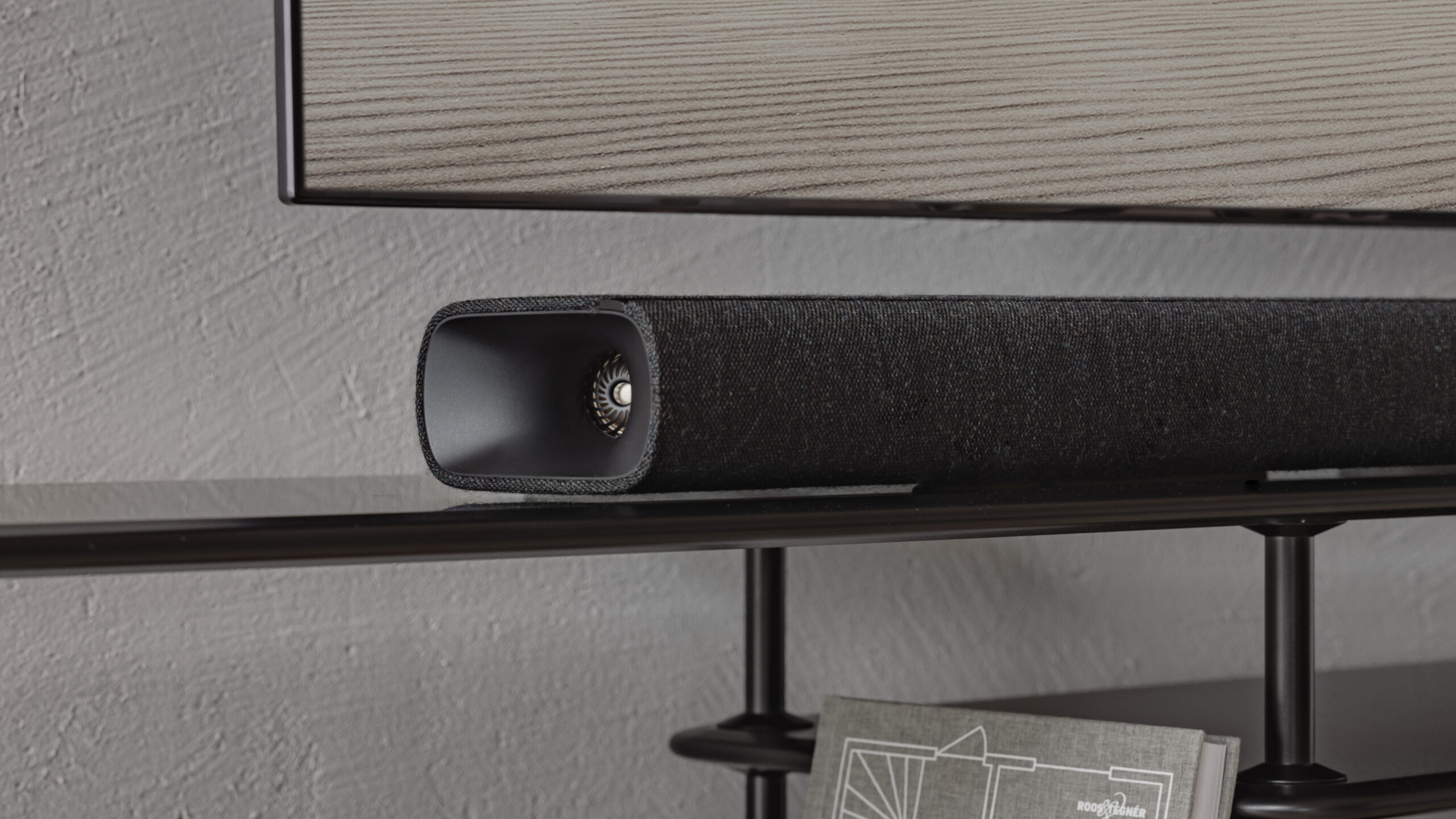
Subwoofer and rear speakers
The soundbar is good enough, but I would say that if you spend that much money on a soundbar, you want something extraordinary. And on its own, the MultiBeam 1100 is no match for the best.
However, something special happens when we connect it with the Citation Surround wireless rear speakers and the Citation Sub subwoofer. Together, the price may be doubled, but it’s still no more expensive than a Sonos Arc, Sub and a pair of One SLs.
For one thing, there’s obviously a lot more bass with the Citation Sub handling the low frequencies. But what’s special is how good and controlled it sounds. The sound is significantly tighter than with the subwoofer that comes with Samsung’s top-of-the-range model, and more linear and natural, too. The sub latches onto the soundbar seamlessly, adding real depth and weight to dialogue.
The film’s first action scene, when Gosling’s character is sent to liquidate a former colleague, features both gunfire and explosive fireworks. It smacks of great believability, while the dialogue is even cleaner and clearer than when the soundbar was supposed to reproduce it alone. The rear speakers extend the soundscape behind us, so that it now completely envelops us. At the same time, the soundboard’s Atmos speakers manage to reproduce sound from above via the ceiling, so we’re completely enveloped in the soundscape.
The dynamics are really good, overall it’s excellent!
By comparison, the Samsung HW-995B can play a little louder at maximum level, and dialogue is a little richer. But the subwoofer blasts more and is nowhere near as restrained as the Harman Kardons. It’s noticeably slower and not entirely linear either. The sound appears more swollen in some frequencies and thinner in others.
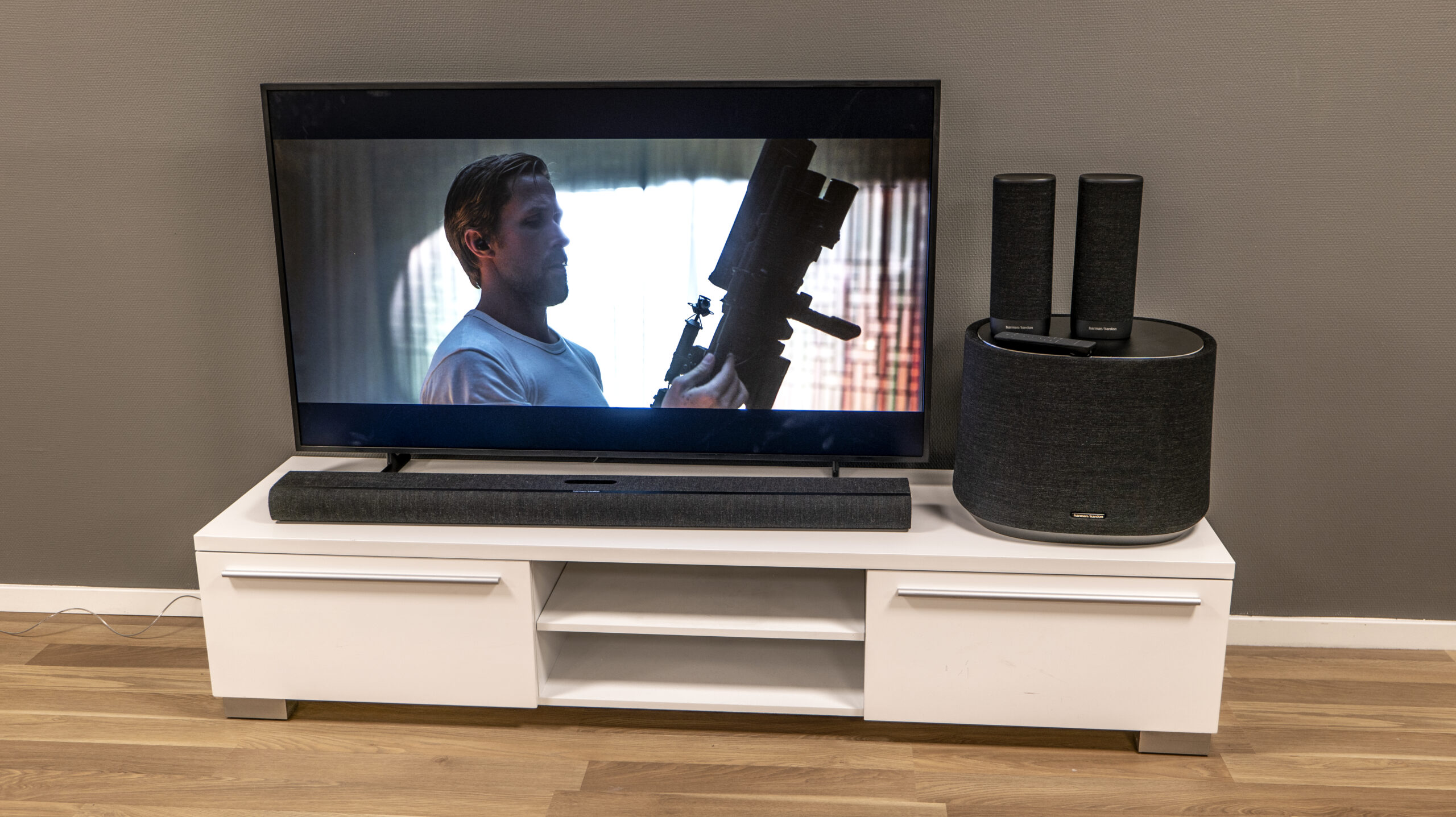
Music
When it comes to stereo music, the soundstage is necessarily narrower with a soundbar than with a pair of Hi-Fi speakers. The sound doesn’t extend beyond the physical width of the soundbar unless you use any of the surround settings. Then it gets bigger, but also more artificial, and I prefer pure stereo.
Apart from the somewhat narrow stereo width, the Citation 1100 sounds surprisingly good in stereo in the company of the subwoofer. Where it gets too narrow on its own, the sound is now high-contrast and powerful, with ample detail in voices and instruments. This is where the otherwise restrained subwoofer really comes into its own, and Harman Kardon suddenly beats Samsung’s soundbar by several lengths. The price of the Citation soundbar and sub is somewhat higher than Samsung charges for its, but if you play a lot of music, it’s worth the extra money in my opinion.
The Citation Sub also seems more powerful than the Sonos Sub, and I rate the Harman system even better than the Sonos package. The Sonos Arc alone sounds better than the MultiBeam 1100 alone, but that changes when both are expanded to surround sound. Mostly because of the Citation Sub.
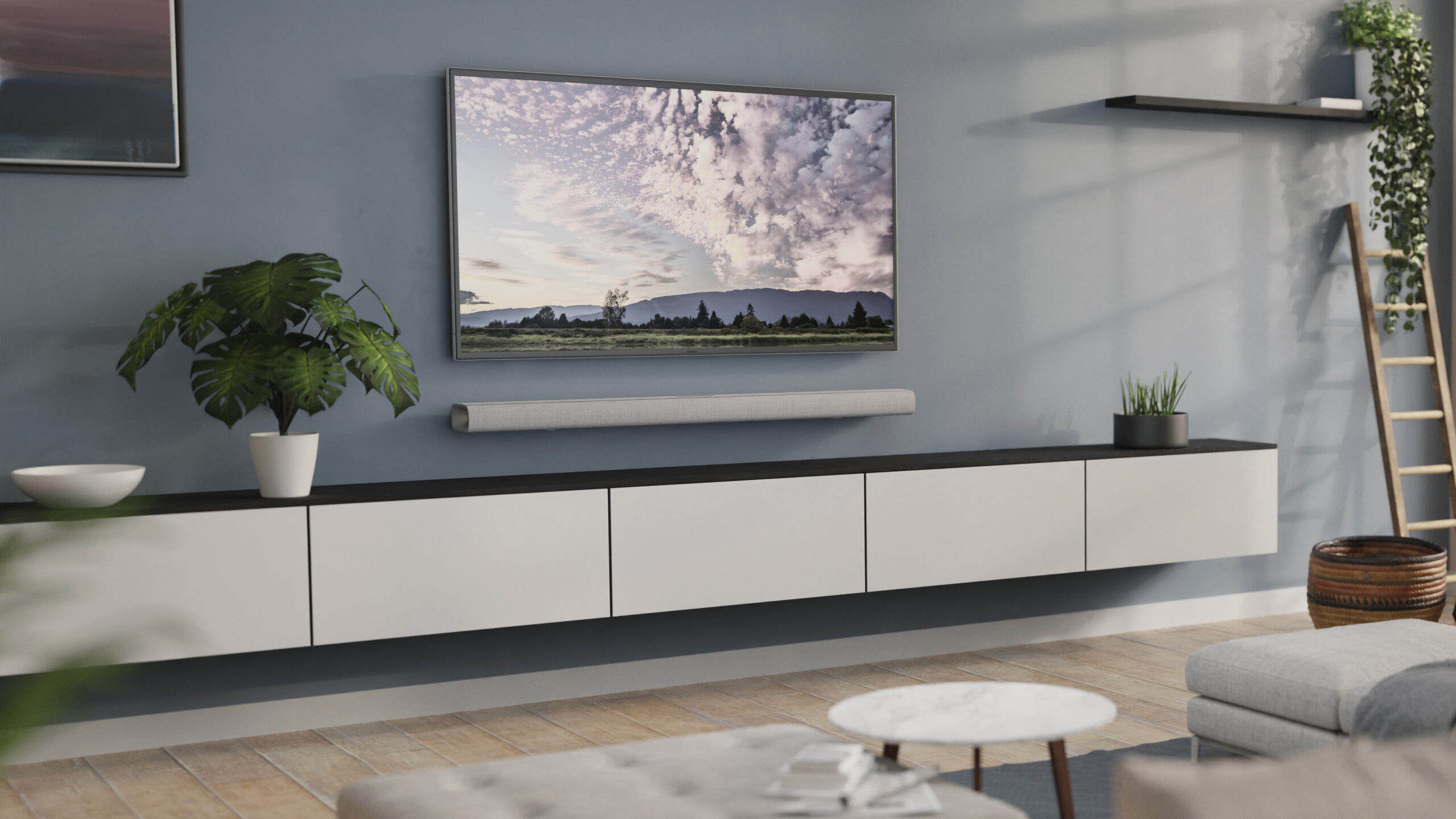
Conclusion
The Harman Kardon Citation MultiBeam 1100 is a good soundbar in its own right. It’s easy to connect, you can voice control it with Google or Apple’s multi-room system, and it has built-in room correction to compensate for poor acoustics.
Dialogue in particular sounds clean and tidy, and there’s quite a good dynamic range here. But it’s only when the soundbar is joined by the Citation Sub and Surround that it becomes truly convincing. Suddenly the system goes from being a bit anonymous to filling the room with clear and powerful sound. It sounds especially good for movies, but music works surprisingly well too. Not least because of the good subwoofer.
As a system, we can’t recommend this package highly enough.

We think
Good dynamics, clear sound, very fine sound on the dialogues. Great ease of use! The sound grows quite enormously together with the subwoofer and rear speakers. On its own, the soundbar is pretty sparse on bass, and there are others with better surround sound.
999 €
Specifications
- Width corresponding to screen size: 50″
- HDMI: 1 in, 1 out (eARC)
- Digital in: Optical
- Network: Wi-Fi, Ethernet
- Wireless: Chromecast, Airplay 2, Spotify Connect, Bluetooth
- Voice control: Google Assistant, Siri, Alexa
- Analogue in: No
- Subwoofer: Optional (wireless)
- Dimensions: 111.5 x 6.5 x 13 cm (W x H x D)
- Color: Black, Grey
- Web: harmanaudio.com
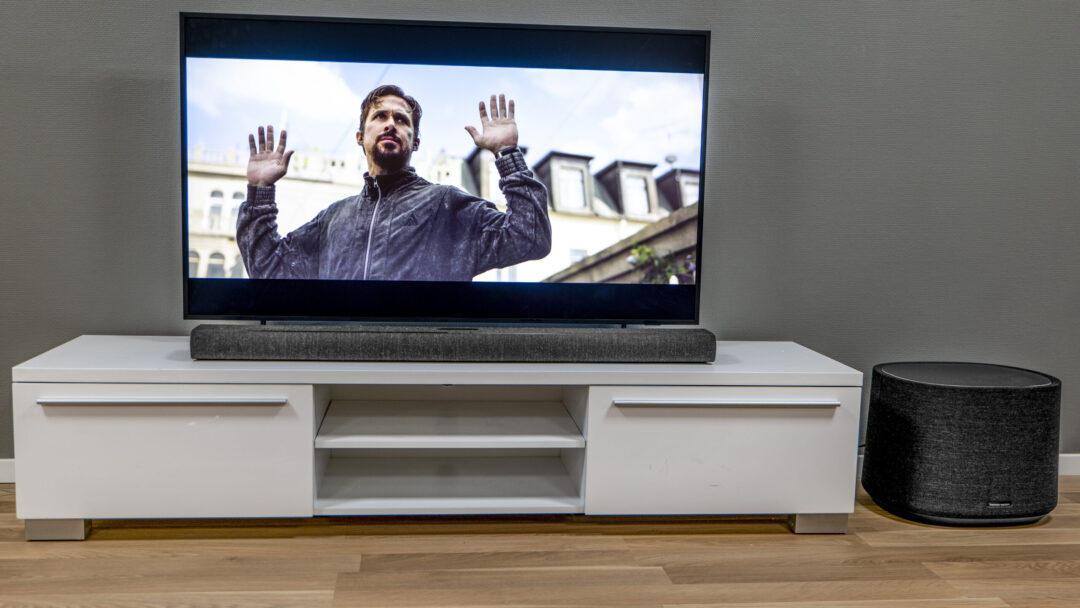

This has to be a joke. While I can agree that sound quality of the bar is good and it for sure has the potential to be great I’ve personally already returned mine. The bar on its own is good, but that’s where it ends. Adding surrounds is a terrible idea as it always plays any kind of stereo content through the rear speakers unless you turn off the smart surround option which unfortunately no longer is an option you can do with your remote once you add surrounds. This means you’d always have to walk to the touch screen to do so. Even then note that this bar is designed for “smart surround” to always be on. Run a simple channel test and notice that in the smart surround option even with non stereo content it will still play the front left and right centers through the rear speakers. It doesn’t even do channel separation properly. If you plan on just buying the bar on it’s own it’s not too bad but realise that this soundbar uses many effects to create immersive sound and default “smart surround” option will mess with channels in order to create this effect.
Can one connect a different sub to this Harman Kardon Citation MultiBeam. Other than H/K:s own?